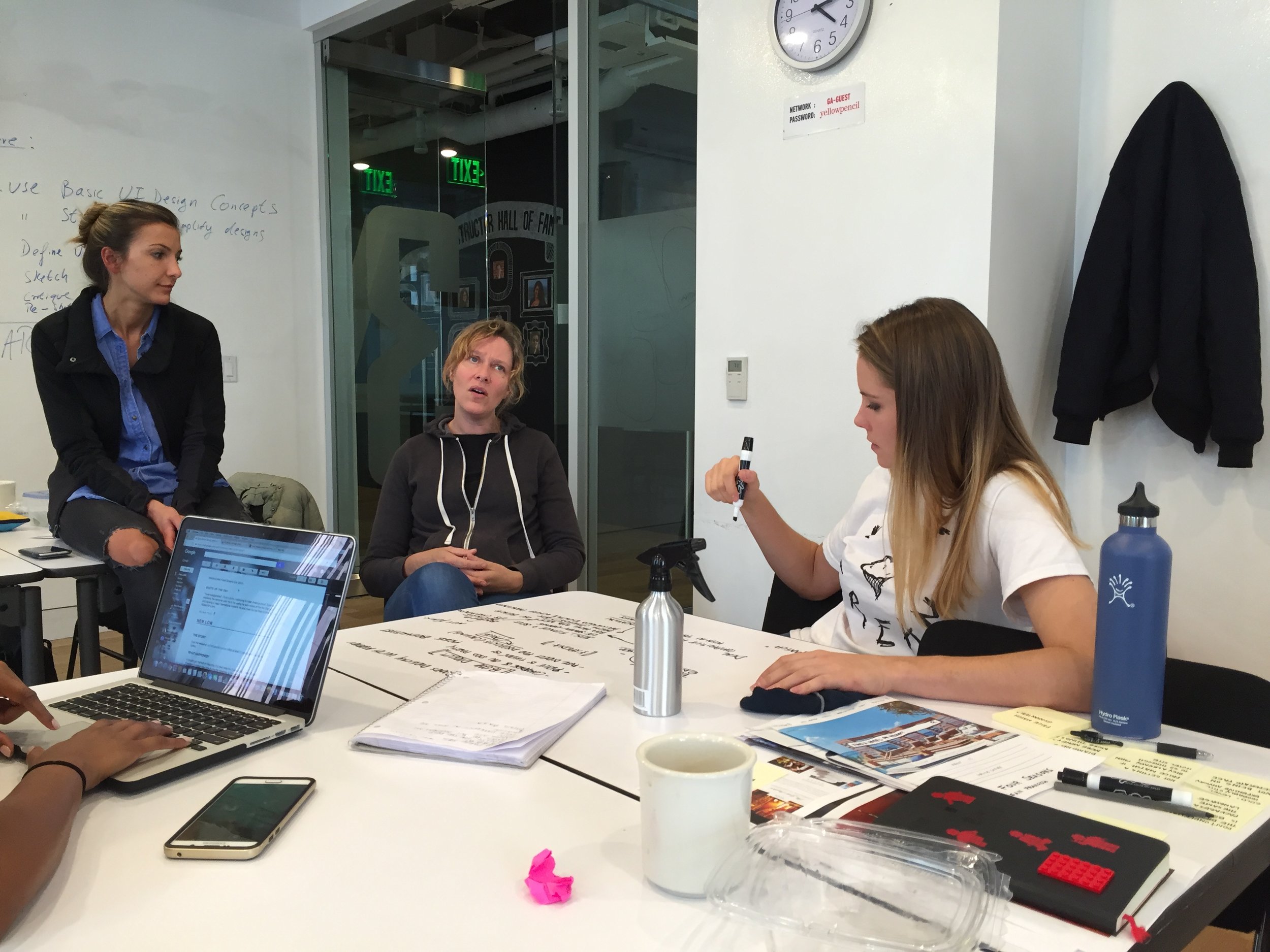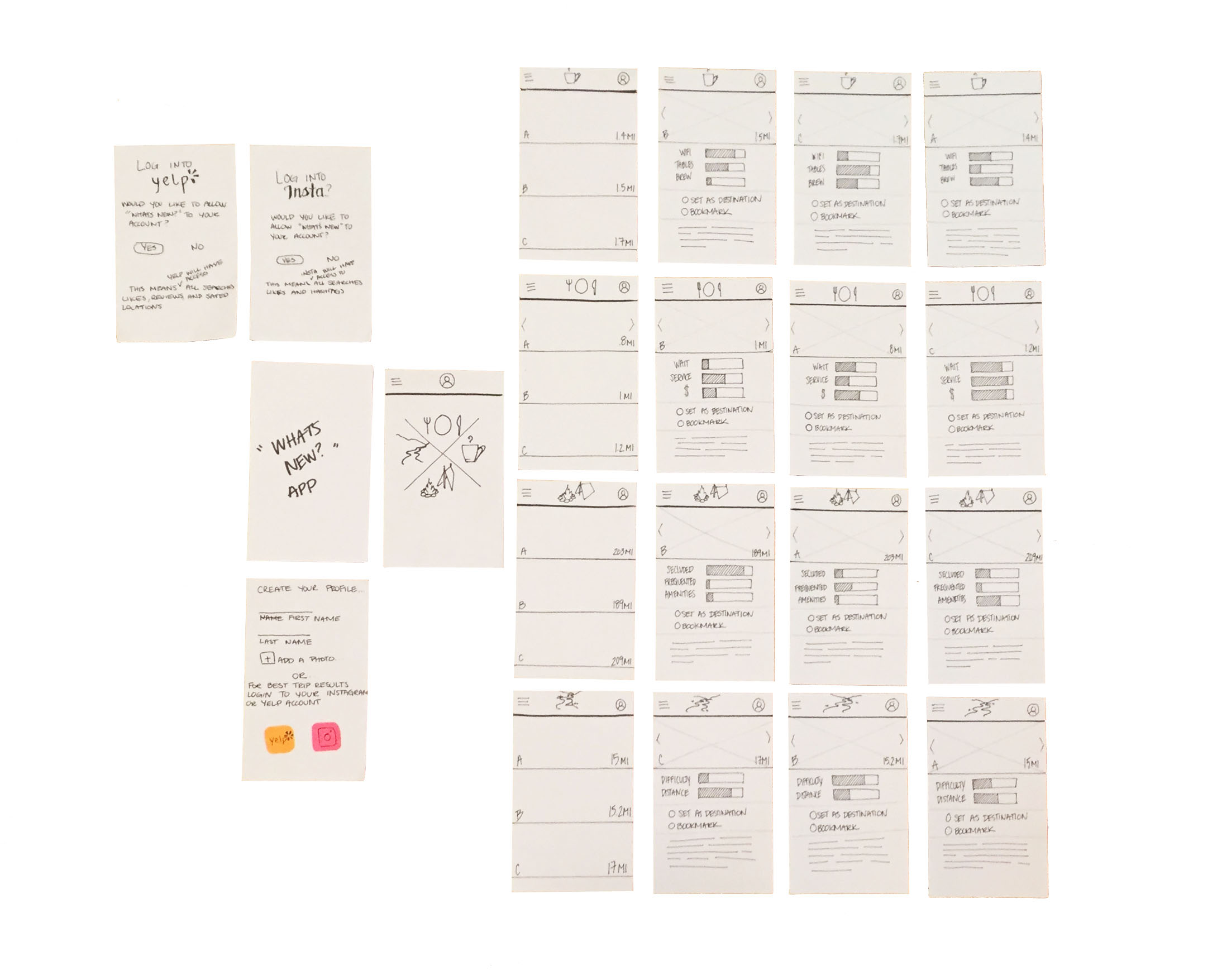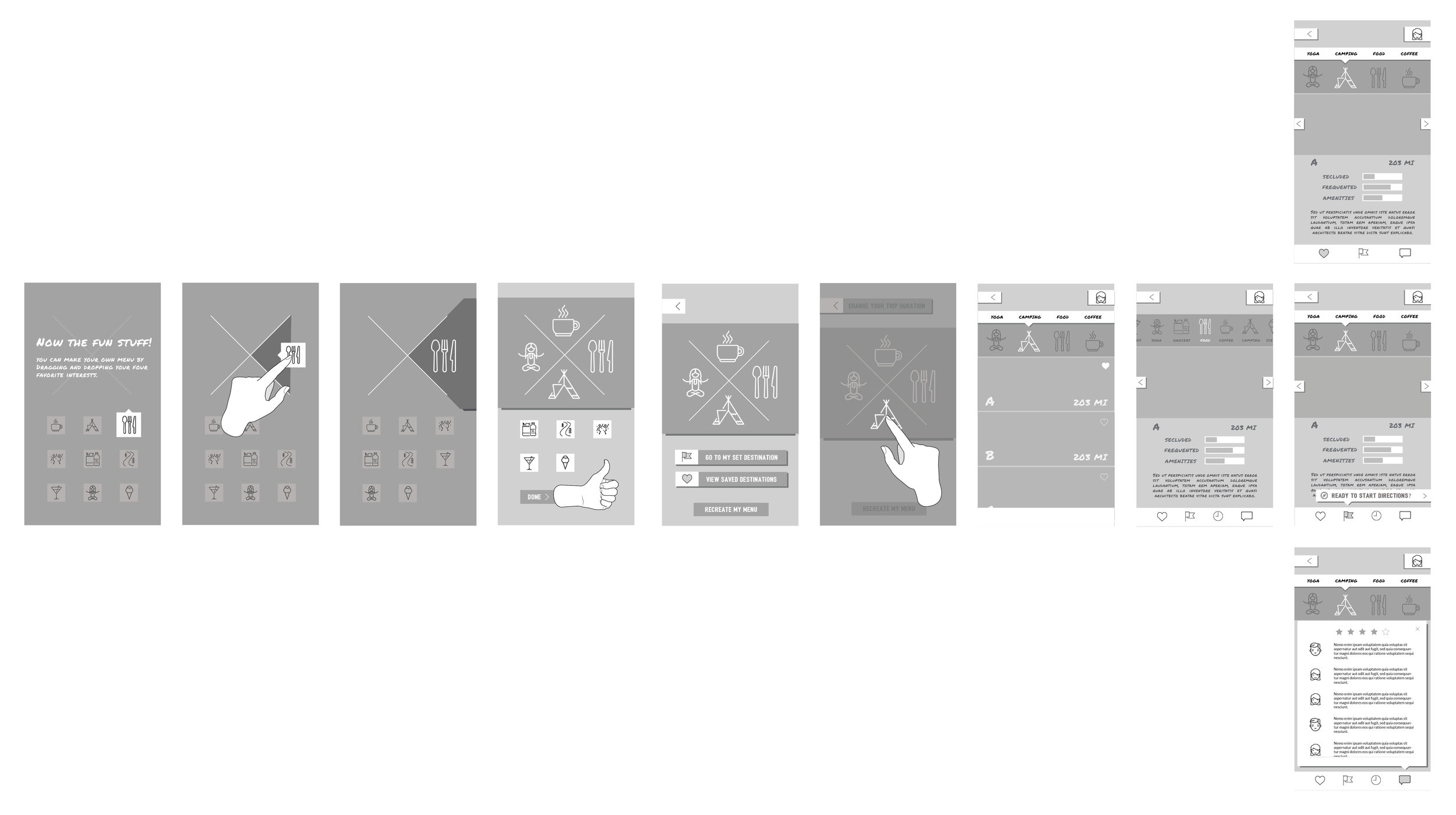QUICK OVERVIEW OF THE PROJECT
"WHAT WAS IT?"
ABOUT
Duration: 2 Week
Project: Independent Project
Tools: Permanent Sharpie, Stickie Notes, Sketch, Illustrator, Photoshop, Invision
"WHERE TO START"
THE CHALLENGE
For our first school project, we were provided a two week sprint in which to UX a solution for a partner. I was partnered with Rachel, a 25 year-old female with a thirst for finding new things related to her hobbies and interests. She has a daily routine, but on her free time likes to add variety by exploring places she has never been. Rachel specifies that her definition of “new” isn't just grand openings or new releases, but includes hidden gems like restaurants, cafes, and camping sites that have been around for a while but she hasn't yet discovered.
"GETTING TO KNOW RACHEL"
UNDERSTANDING THE PERSONA
Rachel has a very unstructured and improvised approach in deciding where and how she spends her time. She knows what she likes but often not until she sees it. She uses popular apps like Instagram and Yelp to try and find new places and things to do. She is frequently, however, disappointed to be presented with the familiar set of stale seeming results, the same old coffee shop, the tired overcrowded chipotle, and the fall back trip to Lake Merritt.
"HELPING RACHEL"
COMING TO A SOLUTION
Based on the problem Rachel provided, I developed my designs accordingly. The solution was to create an app for new places using only small, local businesses and activities to bring elements of uniqueness and variety to Rachel's search. She additionally has the ability to look for places based on her interests and hobbies. Shuffle-Me hides options based on weekly shuffles and previous set destinations maintaining its element of new.
FULL CASE STUDY
"WHERE TO START"
THE CHALLENGE
When I started this project, I was both excited and scared by the ambiguity. I didn’t know what to expect, and it wasn’t until after talking and interviewing my user in-depth that things began to come together.
"GETTING TO KNOW RACHEL"
UNDERSTANDING THE PERSONA
I was able to define Rachel's needs through a constructed interview. The questions I chose to ask Rachel were open ended. I didn’t want to lead the conversation, instead I wanted to listen to what she had to provide me. After interviewing with Rachel for a while I felt I had a pretty good grasp of her interests. Among her favorite activities were trips to unique coffee shops, eating and cooking food, and on the fly camping trips.
"SKETCHING OUT IDEAS"
STORYBOARDING EXPERIENCES
Rachel enjoys her time off and takes a very unstructured and improvised approach to deciding where she spends her free time. She knows what she likes but often not until she sees it. What I found in my sketches of Rachel’s stories was that every trip was at a new place and a new experience. Rachel especially values new experiences because they help break up her daily routines.
"WHERE IS RACHEL HAVING PROBLEMS?"
PROBLEM STATEMENT
Rachel uses popular apps like Instagram and Yelp to try and find new places and things to do. However, she is frequently disappointed to be presented with a familiar set of search results: the same old coffee shop, the tired overcrowded Chipotle, and the fall back trip to Lake Merritt.
"DOING SOME EXPLORING"
RESEARCH AND SYNTHESIS
Based on Rachel’s current resources I observed:
Yelp has a serious lack of variety in search results, especially when searching multiple times in the same destination. This doesn’t work well for my user. Rachel’s spends a lot of her breaks throughout her daily routine looking for new things to do in the area searching in the same location.
On the other hand, Instagram is extremely useful by creating fresh results. The feed does not run chronologically but whats most relevant based on who the user follows. I used this method for inspiration in my design.
I shifted my attention to the moment Rachel decides to travel. When asking for destinations on Yelp, the user is drawn out of the app to Google maps. To create ease for Rachel I wanted her entire experience to be contained within the one app.
"PUTTING MY THOUGHTS DOWN ON PAPER"
FIRST PAPER PROTOTYPE
My first iteration of paper prototyping was designed around Rachel’s interest in camping. During the interviews she relayed to me that where she went in her free time depended on when and how much time vacation time she had. In order to account for both her lack of interests in planning and desire to find new places, I decided to incorporate display options where she could filter her search results based on her free time and form of transportation.
In addition, a large element in designing this app for Rachel was based on her use of Instagram when looking for new things to do. For her, visual images conveyed a lot about the experience she could have. This was a deciding factor in my designs being more oriented towards pictures and less on text.
"WHAT WENT WRONG?"
TESTING
User testing told me a lot about the difficulties of calculating travel factors. My users relayed their lack of trust in how long travel time would be in comparison to how long they would spend at their destination. The app would additionally have to ask Rachel to provide her desired time she would like to spend there.
"NEW CHANGES MADE BASED ON FEEDBACK"
SECOND PAPER PROTOTYPE
In my second prototype I eliminated query for Rachel’s form of transportation and her time off. I didn’t want her to feel overwhelmed. I revisited my notes and resigned an app that includes her top four favorite interests (coffee, camping, food, and hiking) allowing her to quickly navigate based on its specificity to her. In order for Rachel to get the results that best fit to her hobbies, I added a login from Instagram. Based on the photos she likes and their attached pinned locations, her results would narrow for her, until she found a suitable activity.
"HOW CAN I MAKE IT BETTER?"
TESTING
I learned useful information from testing with Rachel that her interests currently are what she is searching, they may change overtime.
"GETTING CLOSER TO THE SOLUTION"
WIREFRAMING
I translated my designs from paper to the computer, making changes to my previous user testing . I wanted to giver her the ability to organize her “menu” (coffee, camping, food, and hiking) based on these interests. By eliminating irrelevant things for Rachel in her menu, she can search more effectively. The design of this feature also allows it to be fun and game-like.
Secondly, I added icons as a visual aid to allow her to avoid typing or entering information. This would allow Rachel to easily toggle between options.
"HOW I GOT HERE"
MOCKUPS
From interviewing Rachel, understanding her problem, sketching out her problems, and the path that lead me to honing in on how to solve her problem, has lead me to my design. Shuffle-Me is an app that allows Rachel to explore new businesses and activities efficiently based on her current interests.
"FUTURE SPRINTS"
POSSIBLIITES
The feedback I had received from user testing furthered my design. If I were to define my second persona, I could expand the app in possible elements of social media, notifications for promotions, finding a way to identify opening businesses, a blog or sharing forum (a whats happening now page), a way in which to sort by types of restaurants or certain foods, and the list goes on....













